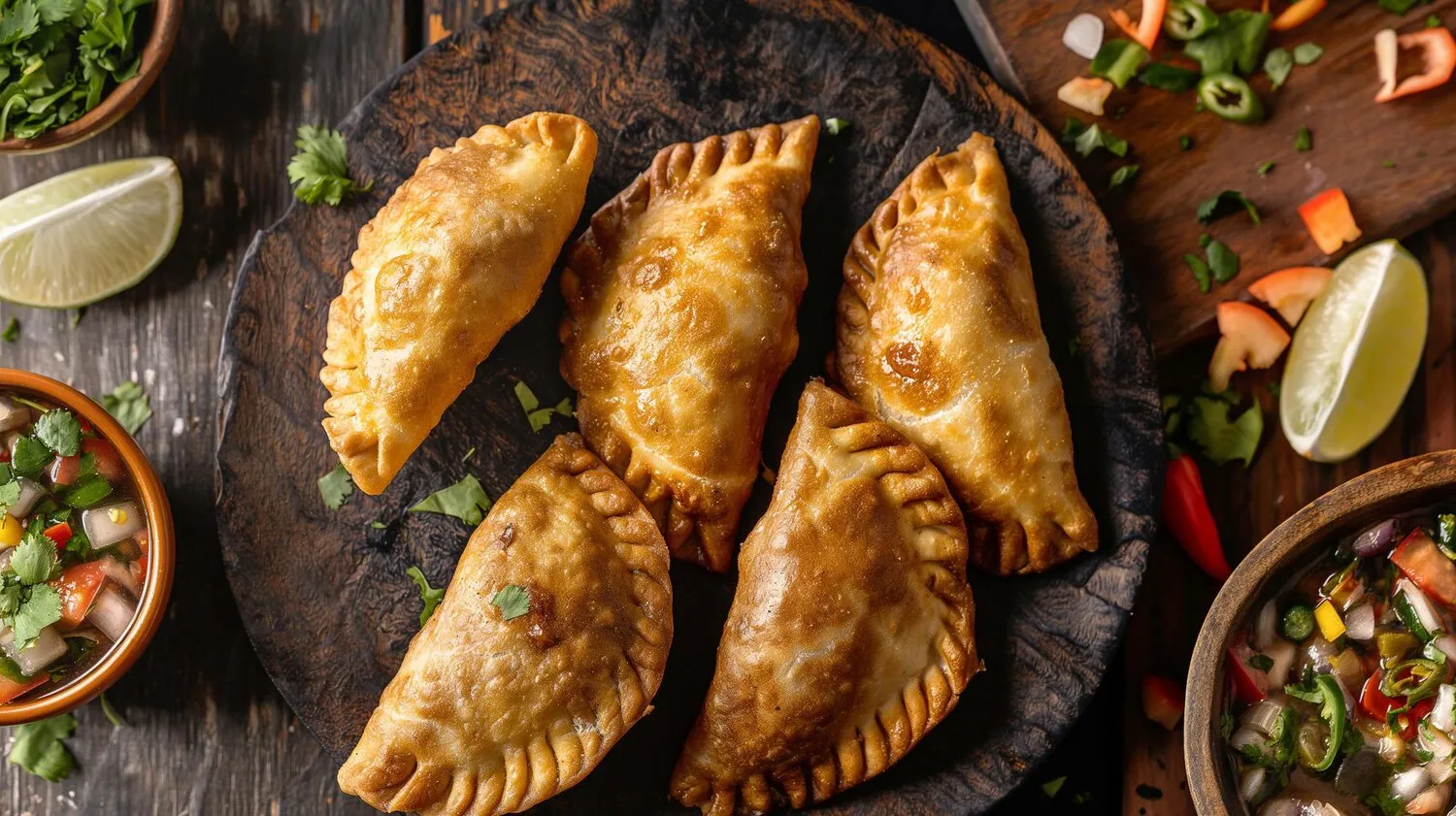
Arepas
Venezuelan corn patties filled with a variety of savory fillings like shredded beef, chicken, cheese, or black beans. Often enjoyed as a breakfast, lunch, or snack.
Nutrition Facts
* The % Daily Value (DV) tells you how much a nutrient in a serving of food contributes to a daily diet. 2,000 calories a day is used for general nutrition advice.
Arepas predate European colonization, with evidence suggesting their existence centuries ago among indigenous tribes in the region that is now Venezuela and Colombia. The preparation and consumption of arepas reflect a long-standing tradition of utilizing corn as a staple food.
Arepas are more than just food in Venezuela; they are a symbol of national identity, cultural heritage, and a daily staple deeply ingrained in Venezuelan life.
Everyday Staple
Arepas are consumed daily, often for breakfast, lunch, or dinner, and can be found in homes, street stalls, and restaurants throughout the country.
Regional Variations
While the basic arepa remains consistent, regional variations exist in terms of size, thickness, and preferred fillings, reflecting the diverse culinary traditions of Venezuela.
Social Gathering
Making and sharing arepas can be a social activity, often involving family and friends gathering together to prepare and enjoy the meal.
National Symbol
Arepas are seen as a symbol of Venezuelan resilience and resourcefulness, especially during times of economic hardship, as they can be made with readily available and affordable ingredients.
Arepas offer a delightful balance of textures and flavors, with the slightly crispy exterior of the corn patty contrasting beautifully with the soft, yielding interior and savory fillings.
The flavor of the arepa itself is subtly sweet and corny, providing a neutral base for a wide variety of fillings. Common fillings include savory shredded beef (carne mechada), seasoned shredded chicken (pollo mechado), salty white cheese (queso blanco), creamy black beans (caraotas negras), and even combinations like ham and cheese. The specific flavors depend heavily on the chosen filling, ranging from rich and meaty to cheesy and savory.
Use Pre-Cooked Corn Flour
Always use pre-cooked corn flour (masa precocida or harina P.A.N.) specifically designed for arepas and tortillas. Regular corn flour will not work.
Achieve the Right Dough Consistency
The dough should be soft and pliable, but not sticky. Add water gradually until you reach the desired consistency. Letting the dough rest for a few minutes helps hydrate the flour fully.
Cook on Medium Heat
Cook the arepas on a lightly oiled griddle or pan over medium heat. This allows the exterior to brown and crisp up without burning, while the interior cooks through.
Finish in the Oven (Optional)
For a perfectly cooked interior, you can finish baking the arepas in a preheated oven (350°F or 175°C) for about 10-15 minutes after cooking them on the griddle.
Don't Overfill
While generous fillings are tempting, overfilling can make the arepa difficult to handle and eat. Start with a moderate amount and adjust to your preference.
Explore additional Venezuelan dishes and restaurants
Explore VenezuelanDiscover top dining spots and culinary experiences in Willemstad.
Explore WillemstadLearn more about the food culture, restaurant scene, and culinary heritage of Curacao.
Explore Curacao